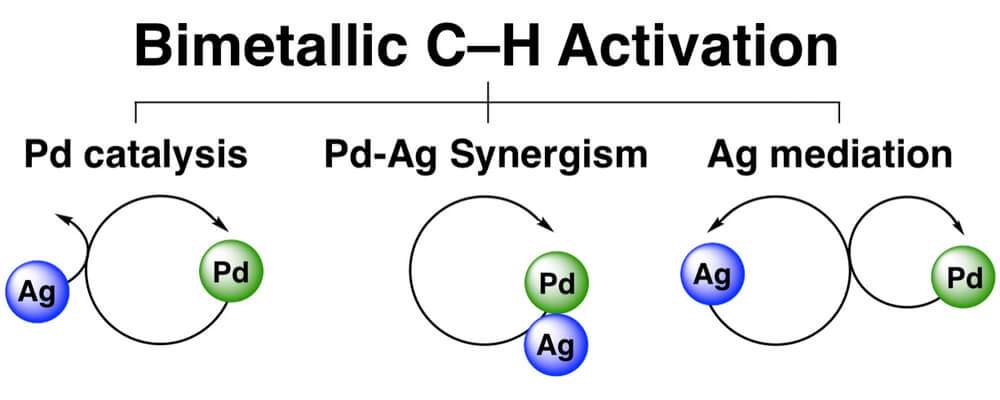Multiple roles of silver salts in palladium-catalyzed C–H activations
Katherine L. Bay, Yun-Fang Yang, K.N.Houk
J. Organometallic Chem.,
2018, In press; DOI:10.1016/j.jorganchem.2017.12.026

12/2017
Palladium (Pd), a precious metal, is also precious to chemists because it can promote the formation of C–C bonds by a process that led to the Nobel Prize in 2010 to chemists Heck, Negishi and Suzuki "for palladium-catalyzed cross couplings in organic synthesis". Sometimes these reactions also involve silver additives that are thought to be terminal oxidants or halide scavengers. However, in 2014, a collaborative report between the Wu, Yu, and Houk groups (Yu and Houk are part of CCHF) revealed that Ag and Pd may have synergistic roles in C–H activation processes. Since then, the function of Ag(I) salts in C–H activation reactions has been a lively topic of discussion in the C–H functionalization and cross-coupling communities.
This mini-review from the Houk group discusses the various roles that silver plays in Pd-catalyzed C–H activation and cross-coupling reactions. Recent experimental and computational studies show that cooperative Pd–Ag bimetallic C–H activations and Ag(I)-mediated Pd-catalyzed C–H arylations can occur. A growing number of reports in the area of heterometallic Pd–Ag transition metal catalysis suggest that either a cooperative effect occurs between Pd and Ag throughout the catalytic cycle, or that silver carboxylates can cleave the C–H bonds.